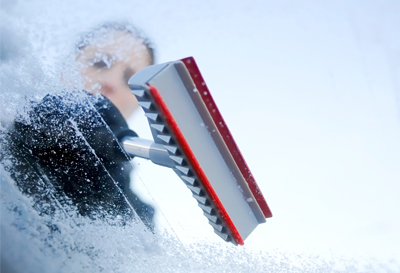Winter Storm 2016
Use the Calm before the Storm to Prepare Yourself and Your Vehicle

Grabbing milk and bread may be your first response but don’t forget to prep your vehicle
Forecasters are predicting snow for this weekend, beginning Friday evening. Depending on the start time for this storm, the evening commute could be messier than usual and it may make the weekend a tricky time to get around. No one PLANS to get stranded so AAA urges motorists to take advantage of the calm before the storm to prepare themselves and their vehicle for the worst by using the A, B, Cs –
Assemble an emergency kit for your car BEFORE you need it
Brush up on your winter driving skills
Consult your car insurance coverage
AAA urges motorists to, if at all possible, wait until the storm has passed and roads are plowed and sanded before venturing out. If you have to be out, drive with caution and give road crews plenty of room to do their job safely. For everyone’s safety on the roads, drivers should allow plenty of extra time to properly clean off their vehicle before getting behind the wheel.
Assemble an emergency kit BEFORE you need it:
- Emergency kit items to include – deicer, shovel, ice scraper, sand or kitty litter (for traction)
- Pack a blanket, extra gloves, and hat, heavy coat – if you’re stuck on the road for an extended period of time you’ll need to stay warm, especially if your vehicle is not running
- Pack snacks, beverages, etc. – have them packed by the door to take in the morning (so they don’t freeze in the car overnight)
- Charge your cell phone – have a backup power source for the car in case you’re stuck for a while
- Make sure your windshield wipers and lights (headlights, taillights, turn signals) are working properly – make sure you can see and can be seen
- Keep a FULL tank of gas
Brush up on your winter driving skills:
- Wait for the roads to be plowed and treated before venturing out – road surface condition is the single most important safety factor during a winter weather event.
- Thoroughly clean off your car – remove ALL snow and ice before driving anywhere.
- Warm the car up OUTSIDE the garage
- Drive SLOWLY
- Increase following distances
- Accelerate and brake slowly – it takes longer to slow down on snowy, icy roads.
- Do not use cruise control and avoid tailgating - normal following distances of three to four seconds for dry pavement should be increased to eight to 10 seconds when driving on icy, slippery surfaces.
- Regardless of whether the vehicle has front-, rear- or four-wheel drive, the best way to regain control if the front wheels skid is:
- Continue to look where you want to go.
- Steer in the direction you want the front of the vehicle to go.
- Avoid slamming on the brakes. Although hitting the brakes is a typical response, slamming the brakes will only further upset the vehicle’s balance and make it harder to regain control.
- Wait for the front wheels to grip the road again. As soon as traction returns, the vehicle will start to steer again.
- When the front wheels have regained their grip, steer the wheels gently in the desired direction of travel.
- Use the “plant and steer” method with antilock brake systems. Do not remove your foot from the brake or pump the pedal. If you apply pressure and the wheels lock momentarily, you might feel the brake pedal pulse back against your foot. This is normal. Just hold the brake pedal down and steer. Pumping the pedal actually works against the system.
Brush up on your driving skills with this AAA YouTube video: How to Drive in the Snow
Consult your car insurance coverage
Roughly 24 percent of weather-related crashes occur on snowy, slushy or icy roads so spending a little time now learning about what’s covered and what’s not can help you avoid costly and emotionally draining consequences later.
- Make sure to have a current copy of your car insurance card in the car with you or on your phone, if needed.
- If you are involved in an accident, knowing what your policy covers is an important protection.
- Collision coverage, an optional portion of a standard auto insurance policy, covers damage to a car resulting from a collision with an object (e.g., a pothole, lamp post or guard rail) or another car. However, it does not cover wear and tear to a car or its tires due to bad road conditions or potholes. If your car crashes on icy or snow-covered road, that would fall under the collision portion of your policy (minus the deductible).
- Comprehensive coverage reimburses drivers for theft, vandalism, flooding and damage from fallen objects, such as ice-covered tree branches. If your car is damaged by falling ice, comprehensive insurance will cover it (minus the deductible).
For more information on safe driving in the snow, please click here
Remember AAA will assist anytime Day, Night or Weather and covers YOU - as a driver or passenger.
Service Tracker* is a new tool and benefit available to AAA Members who need Roadside Assistance. It’s available to members when assistance is requested from the AAA Mobile app or by calling 1-800-222-HELP.
Download app HERE
